2025 Social Trends: How Human-Centric Leadership and AI Will Drive Workplace Evolution
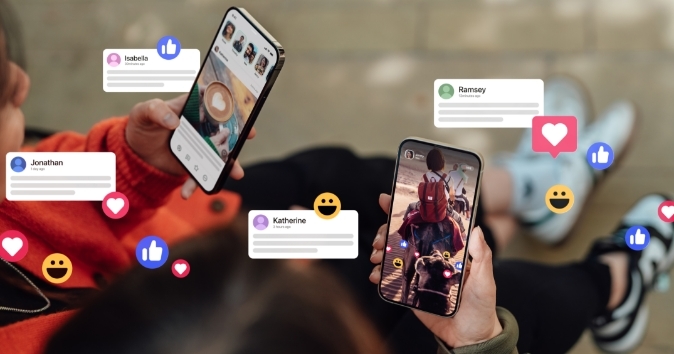
2025 is just around the corner – what could this year have in store after the wild ride of 2024?
It won’t surprise you to learn that, heading into 2025, technology and AI are embedded in almost every trend across the world of work. As they continue to dominate the conversation, the question of how these innovations fit into a human workplace keeps arising.
Let’s dig into 2025 workplace trends, as seen through the latest conversations on social media.
Leadership & management trends
Leadership has their work cut out for them as they continue to adapt to a rapidly evolving workplace. Here’s what’s coming up for leadership and management heading into 2025.
Human-centric leadership
In the age of automation and AI, human-centric leadership is more important than ever. According to Forbes, leaders who can foster emotional connections and build cohesive teams will be necessary.
While empathetic, emotionally intelligent leaders might seem like an obviously good thing, this trend is a departure from traditional management that focuses more on task management.
Leaders in 2025 will have to nurture their teams through rapid change and facilitate human-machine collaboration in a way they’ve never done before.
As Cindy Urrutia, Ph.D., writes, prioritizing people over process helps build durable relationships and drives loyalty while also pushing innovation and engagement.
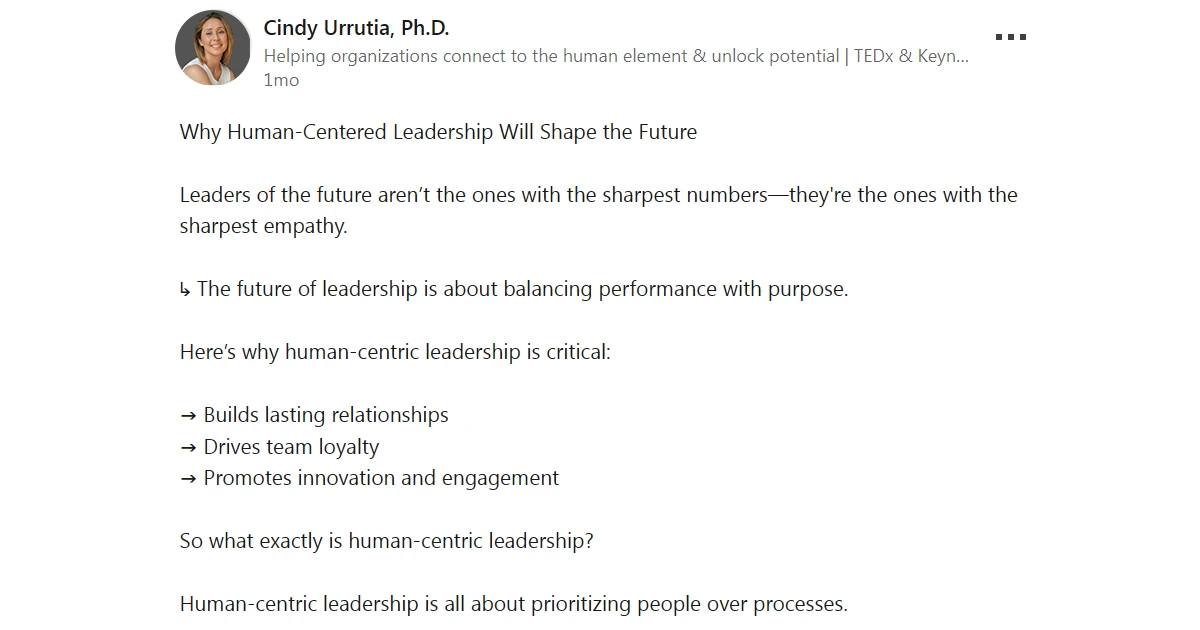
Equitable leadership
Similarly, leadership needs to prioritize equity in their development programs. According to Korn Ferry, this trend pushes leaders to cultivate equitable opportunities for all employees regardless of their background and provide support for historically underrepresented groups to thrive.
Korn Ferry found in a survey that, in Brazil, 30% of respondents see a lack of DE&I commitment, while in the USA, 34% think their companies are overly committed. This dissonance highlights how individual and strategic leadership management should be based on different expectations within organizations.
Above all else, leaders must foster workplaces where diverse perspectives are celebrated and integrated. This includes building cultural awareness and sensitivity into training programs for all employees.
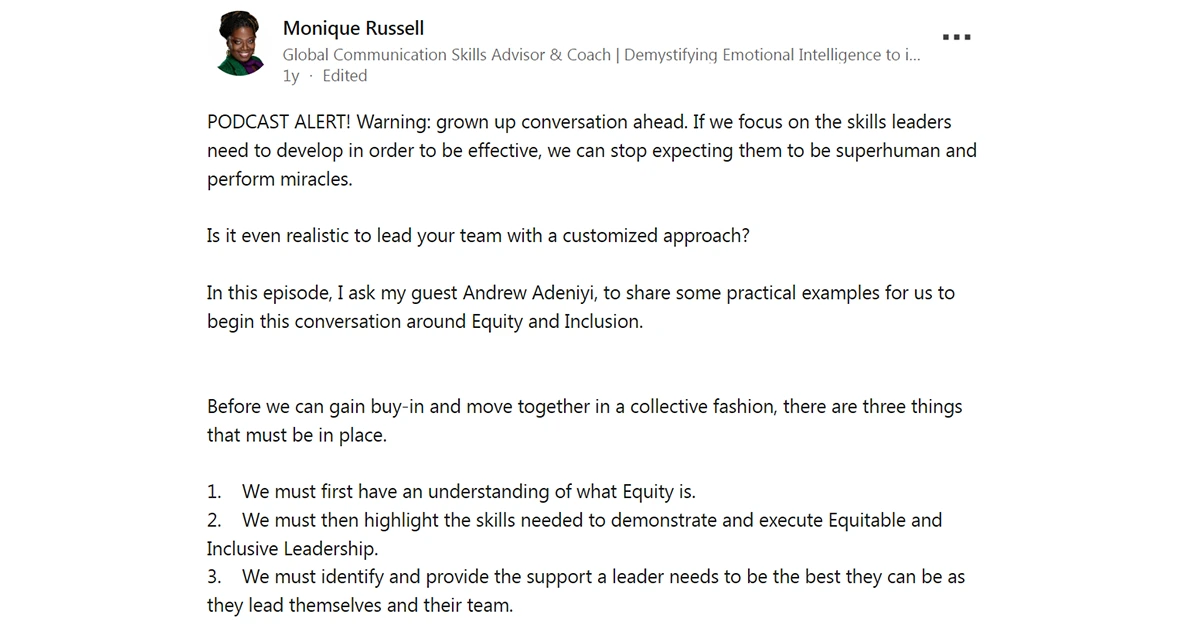
Management reskilling
Reskilling is one of the top trends for 2025, and managers are no exception to the rule. Leadership must prioritize reskilling across all layers of management in order to keep their people-oriented leader nimble across evolving expectations. This means, according to Aspirant, managers will have “less formal power and a greater need to support fluid, intertwined employees in rapid succession.”
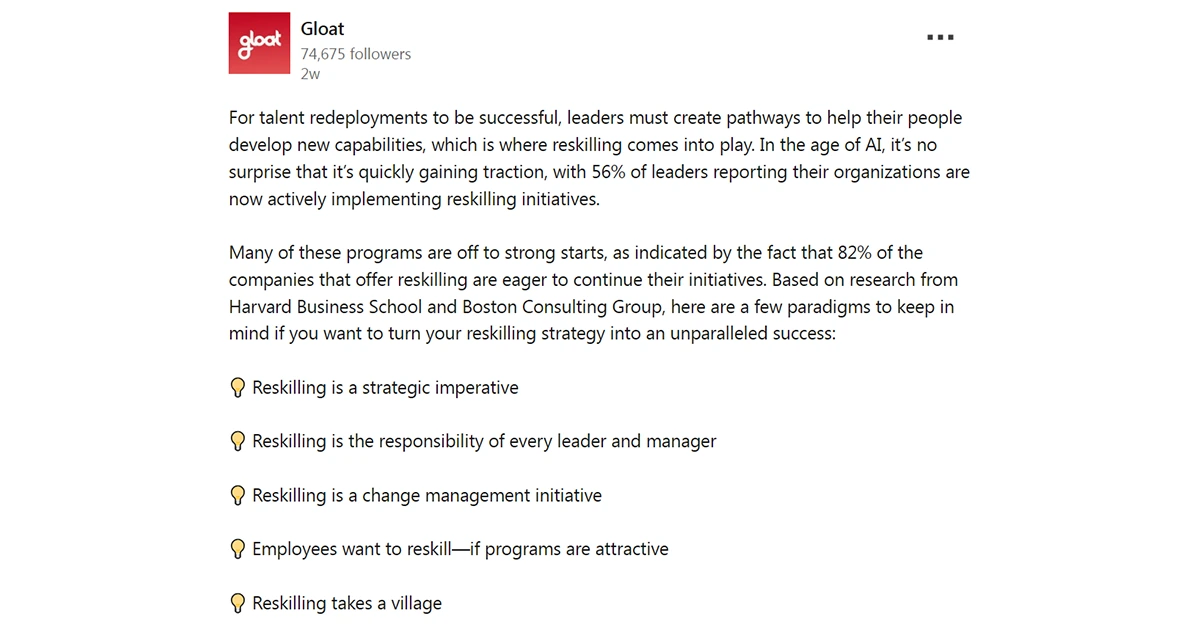
In short: if you don’t enforce management reskilling, you will get left behind.
In order to reskill, per Gloat, such a strategy needs to be touted at every level of the organization. That means leadership supporting reskilling efforts by ensuring managers have the time and resources they need to do so, as well as celebrating it through employee recognition. This reinforces reskilling employees as a key tenet of your organization.
Technology in the workforce
Technology and AI are prevalent throughout most 2025 work trends because, well, these tools are only becoming more ubiquitous. Companies are quickly realizing the potential for how these tools can augment human talent rather than replace it outright, leading to our next trend.
Human-machine synergy
People managers and organizational leaders should turn their focus to how AI can enhance human capabilities and boost productivity and creativity.
According to Forbes, this mindset can empower humans to do what they do best – facilitate nuanced conversation, foster emotional intelligence, and think strategically – while AI handles automated tasks.
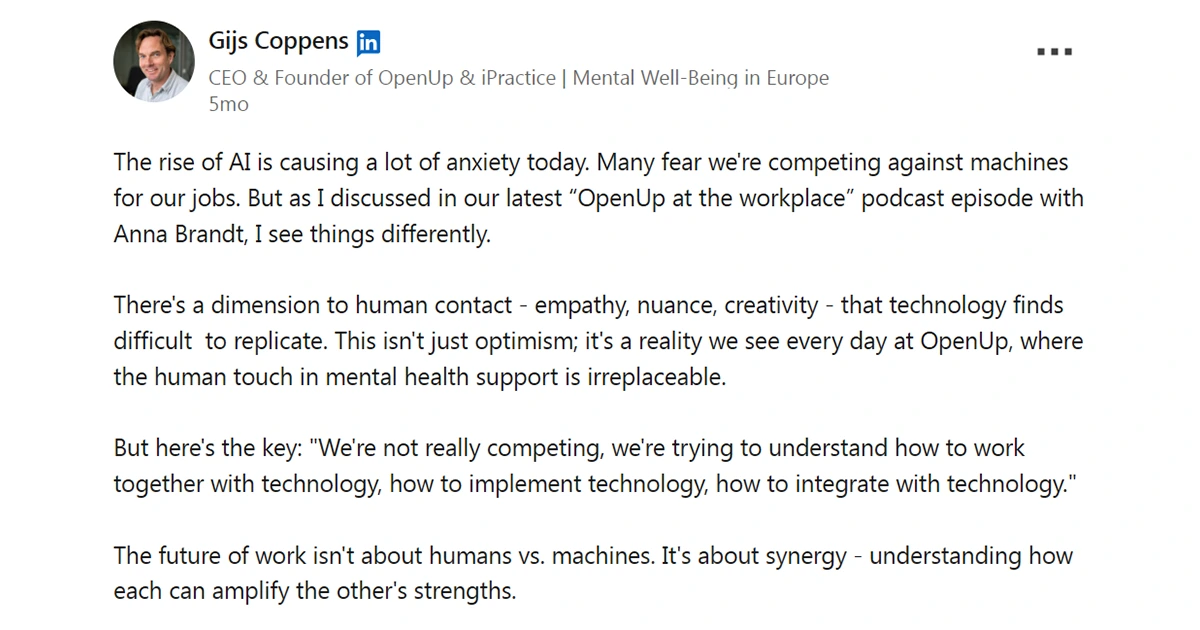
According to Korn Ferry’s Global Workforce 2024 SurveyOpens in a new tab, almost two-thirds (65.5%) of global business leaders are excited about AI's impact on their work. Most CEOs (73%) and senior executives (80%) believe AI will significantly enhance their value within the next three years.
As Coppens writes, it’s vital to view this as an opportunity rather than a competition. If organizations haven’t already pivoted to support continuous upskilling and education on new and emerging technology to this end, they may already be behind.
Future workforce dynamics
As management styles and workplace skills evolve, so too will workforce dynamics. Here are a few of the top trends for the 2025 workplace.
Embedded HR
HR professionals are no longer a siloed part of an organization but an integral part of the teams they support. As AI plays a growing role in recruitment, talent development, and performance management, HR leaders can focus on strategy and the “human” part of human resources.
According to ForbesOpens in a new tab, “Successful HR departments will leverage AI to enhance, not replace, human judgment and empathy.”
Whole-person employment
In the face of AI and automation, workplaces must embrace the inherently human parts of work. According to Aspirant, factors like recognition, self-development, values-driven organizations, and work-life balance are coming to the forefront, sometimes taking precedence over compensation itself.
This means organizations need to turn to tools like employee recognition to keep their workforce satisfied and engaged. These sorts of “perks” are increasingly essential rather than just a “nice-to-have.”
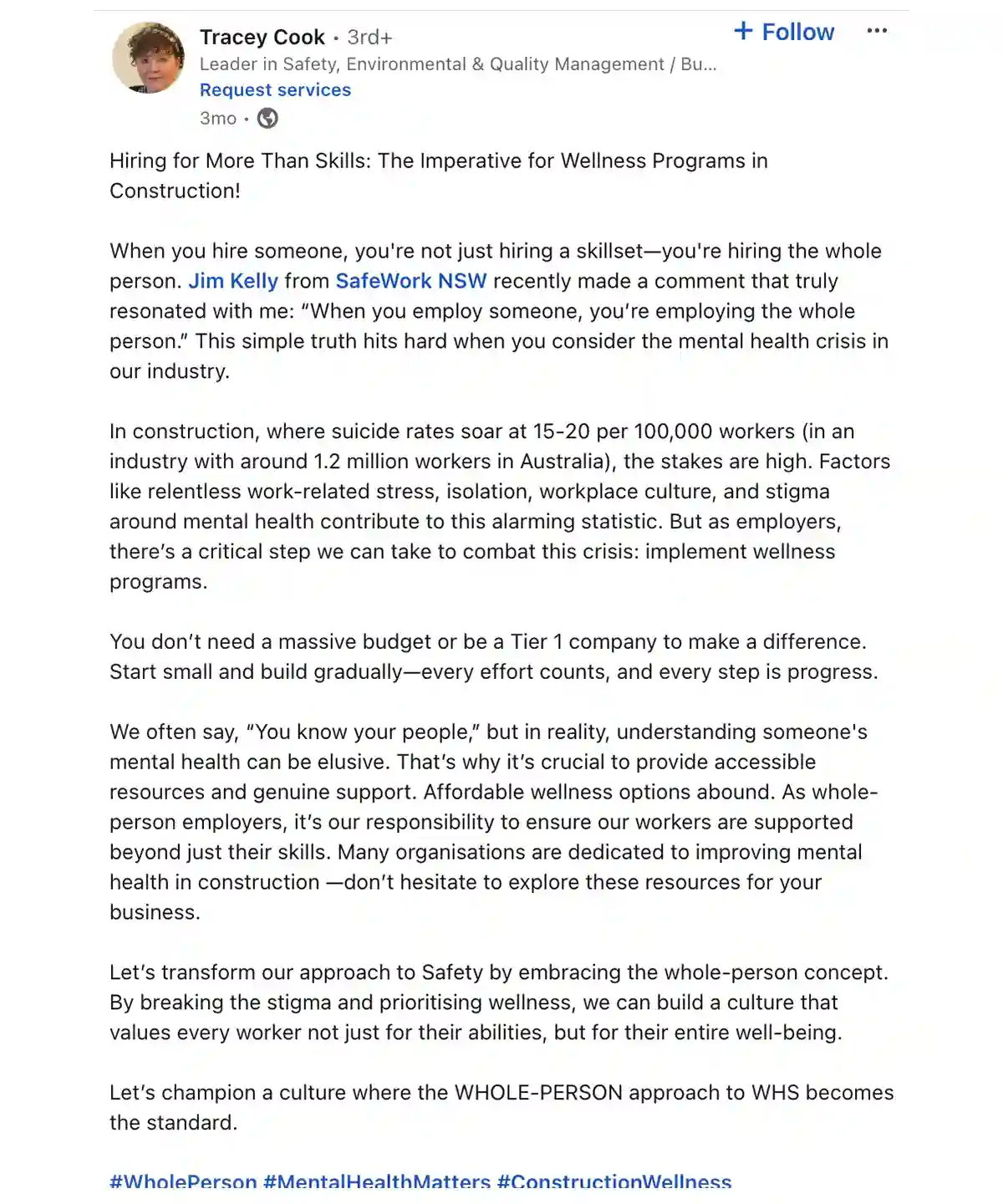
That’s why Workhuman® stresses recognition “done right” – recognition that fulfills the five pillars to make the most impact. When recognition is consistent, specific, and genuine, it has a much stronger, lasting effect.
Workhuman's latest innovations make recognition done right easier than ever, with data visualizations of recognition distribution and custom nudges for managers to send out recognition at timely intervals.
New-collar job
New-collar jobs draw on the upskilling trend. According to AIHR, new-collar jobs “Require advanced skills in high-tech areas like AI and cybersecurity but not necessarily advanced degrees; provide significant opportunities for skilled workers who have the necessary soft skills or mindset to learn new skills through practical experience or occupational training.”
This means employees who are skills-driven or have a learners’ mindset will thrive in the rapidly evolving work landscape.
For HR, this means looking out for candidates’ willingness to learn a new skill and considering how to promote upskilling within their existing workforce. This includes soft skills like flexibility, organization, and adaptability.
Conclusion
2025 is shaping up to be another year full of rapid-fire change as AI continues to take hold in organizations across the globe. One of the best ways to keep up is by grounding in the human element of work. Workhuman makes that easy by embedding recognition where work happens so you can send appreciation the moment a deserving instance crosses your desk.
Learn more by exploring our recognition platform today.
About the author
Maeve Ginsberg
A wellness enthusiast and the mid-day walk’s #1 fan, Maeve champions work-life balance.
Having gone from a corporate job to self employment, Maeve has lived through countless working styles. This evolution forced confrontation of her own limiting beliefs, eventually breeding a completely individualized approach to work and productivity.
As a Senior Copywriter, Maeve often writes on workplace wellbeing and strives to advocate for all workers and leaders to find small yet significant ways to make their work lives healthier and more fulfilling.
Offline, Maeve enjoys testing new cuisines and hanging upside down off walls (also known as bouldering).